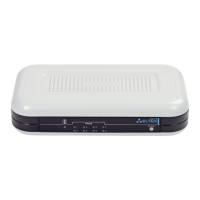____________________________________________________________________________________
____________________________________________________________________________________
58 VoIP subscriber gateways
Sometimes, you may need to make calls locally inside of the device. If IP address is unknown or
periodically changing, you may use the reserved word «{local}». It means sending of the corresponding
digit sequence to the own device address.
Example: (123@{local}) – call to the 123 number will be locally processed inside of the
device.
6. Pickup code configuration
You may set a pickup code for assigned group by using this command.
Syntax: ABC@{pickup:X}
where ABC – pickup code (for example *8);
X – pickup group number (numbering from zero).
Example: 112@{pickup:0} – A and B subscribers are involved by one pickup group
with index 0. If A subscriber receives the incoming call then B subscriber can pick up
call by dialing 112 digit combination.
7. Codec assigning for directions
In dependence on call direction, you may use different codecs. This setting is more priority than common
codec settings (see section 3.1.4.1.2).
Syntax: «call direction» (codecs: codec1, codec2, codec3, codec4)
where codec1, codec2, codec3, codec4 – codecs used on assigned direction in priority
order
Example: XXXX@10.16.24.5 (codecs: g723, g711u, g711a, g729a) – g.723 (in this
case priority is highest) g.711u, g.711a and g.729a (codec is assigned as final, priority
is lowest) codecs will be used for calls to XXXX@10.16.24.5.
To save changes into the device operative memory, click ‘Save’ button. To exit the editing mode without
changes, click ‘Cancel’ button.
To record settings into the non-volatile memory, click ‘Apply’ button.
3.1.4.2 ‘QoS’ submenu
Use this menu to configure QoS parameters.

